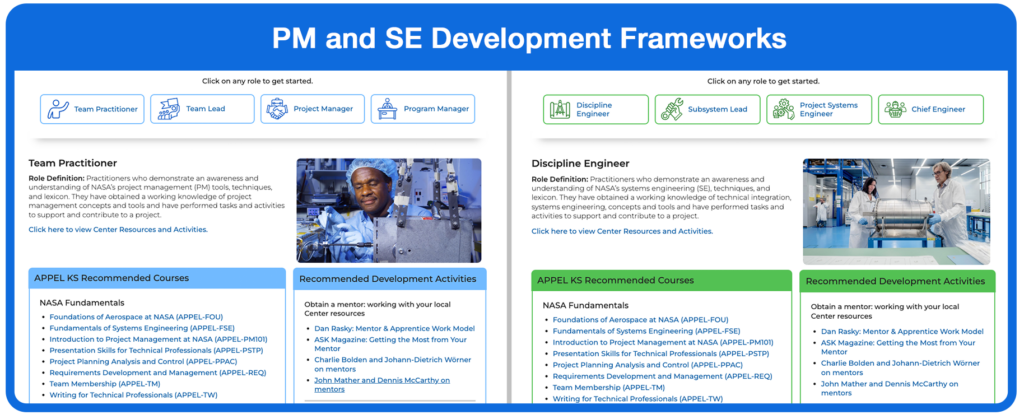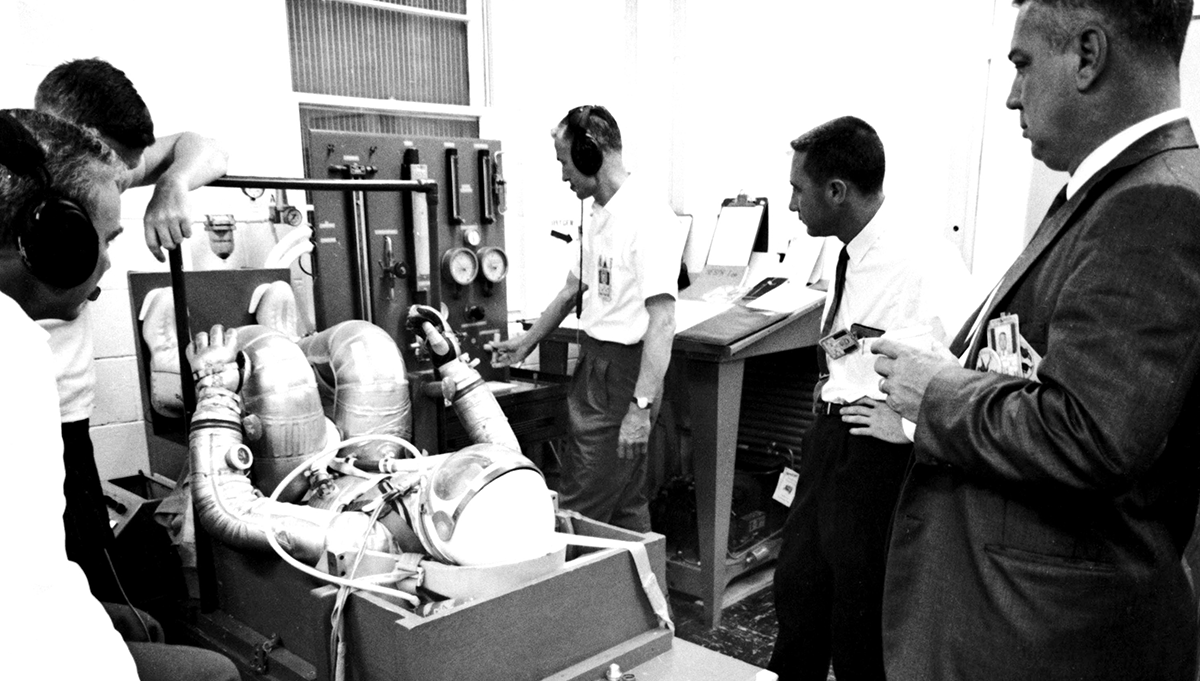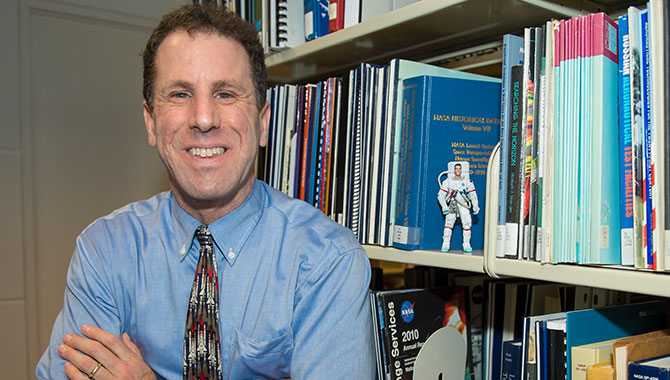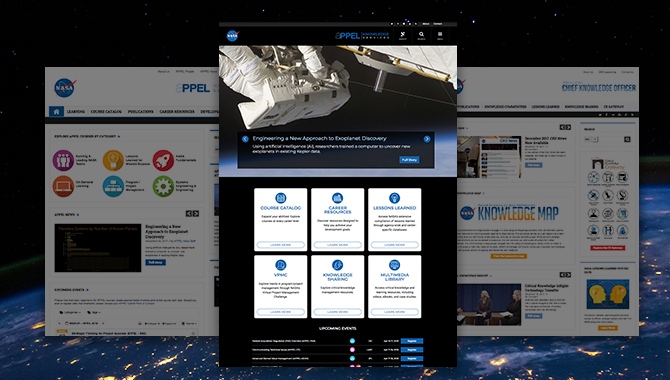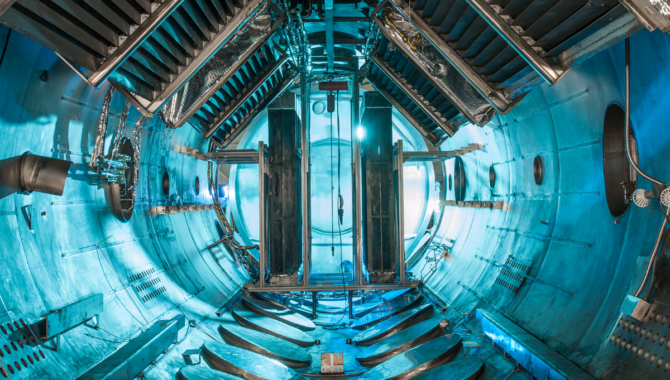
NASA’s technical workforce regularly pushes the boundaries of science and engineering in facilities such as this, Vacuum Chamber 5 (VF-5) at NASA’s Glenn Research Center, which has the highest pumping speed of any electric propulsion test facility in the world to better simulate a space-like environment. APPEL Knowledge Service’s new Development Frameworks and Competency Models help members of the technical workforce develop the abilities they need to advance their careers.
Credit: NASA
Resources focus on developing key professional competencies.
APPEL Knowledge Services (KS) recently completed sweeping updates to important online tools for NASA’s technical workforce. The revised Development Frameworks and Competency Models have fresh new looks, updated text, and improved navigation for a streamlined user experience.
The Development Frameworks and Competency Models are foundational tools to guide members of NASA’s technical workforce as they seek to build competencies and grow professionally in the disciplines of Program and Project Management or Systems Engineering.
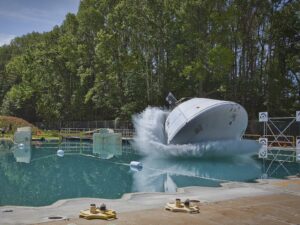
NASA’s technical workforce is working to establish a sustained human presence at the Moon with projects such as this, the third water landing test of the Orion spacecraft in the Hydro Impact Basin at NASA Langley Research Center. APPEL KS recently updated key career development tools to guide members of the technical workforce to more rewarding career paths.
Credit: NASA
“A competency model helps you to understand the questions, concerns, and language that are specific to a discipline. A development framework helps you to understand how people navigate the discipline: what kind of opportunities are available at different stages of a career, and what sorts of activities can support your professional development,” said Tiffany L. Smith, NASA Chief Knowledge Officer and the Director of APPEL KS.
APPEL KS maintains the competency models and development frameworks for Program and Project Management and Systems Engineering at NASA as an essential component in supporting the agency’s technical workforce with the knowledge and training required to deliver on NASA’s mission.
“As the Program and Project Management and Systems Engineering disciplines have grown over the past few years, it was apparent we needed separate models and frameworks that more fully encompass the nuances and provide a unique path forward for each discipline,” said Stephen Angelillo, Deputy Director of APPEL KS. “As this growth continues, we will now have the ability to identify and address more discipline-specific distinctions and incorporate these into each model.”
The project began with a comprehensive content review of the previous models—more than 30,000 words of text—aligning material in the frameworks and competency models with official definitions from NASA, adding new NASA resources, and pointing to new APPEL KS courses and development resources.
“The biggest challenge was gathering and assessing the large amount of existing data. There was a lot of information to validate and ensure was valuable to our practitioners,” said Daniel Connell, APPEL KS Strategic Communications Manager. “Fortunately, we have an incredible team to comb through everything and that led to our models and frameworks including only pertinent information.”
The APPEL KS Competency Models define dozens of key capabilities, such as Risk Management, Product Integration, and Knowledge Management. Each entry provides an outline of the proficiencies expected at increasing levels of responsibility, with real world examples, and a skills list. There are separate competency models for Systems Engineering and Program and Project Management, with 14 common competencies appearing on both models.
For instance, Project Control is defined as: “Performing technical and programmatic activities to control cost, schedule, technical content, and configuration to assure the project’s performance is within approved baseline and to address performance variances.” It requires the skills of clear communication, leadership, strategic thinking, win-win negotiations, and teamwork. The model details the steps in each competency from Team Practitioner to Team Lead to Project Manager to Program Manager.
The Development Frameworks guide NASA’s technical workforce through the APPEL KS courses they can take at each step of their career to build these key competencies. The frameworks also include valuable lessons learned, key policy documents, and supplemental development activities to support their goals.
Once the data was updated and key resources added, Connell and Graphic Designer, Masha Berger worked to reimagine the resources with new designs and a simpler, more intuitive interface. This began with the development of wireframes that worked within the existing technical architecture.
“Once the wireframes were approved and I started building out the web pages, I ran across many bugs that were pretty fun to solve,” Berger said. “To make the pages more user-friendly, we received a lot of feedback from our customers and stakeholders during three design reviews. There were certain details that I would have missed if I did not get this feedback.”
“NASA’s competency models and professional frameworks draw from a range of lessons learned and practitioner insights.”
The new formats give APPEL KS the flexibility to make updates and changes as the agency’s needs change. Earlier this month, APPEL KS previewed the resources with the Chief Program Management Officer, the Office of the Chief Engineer, the NASA Technical Fellow for Systems Engineering, Chief Knowledge Officers and Points of Contact at NASA centers. Reviews were positive.
“NASA’s competency models and professional frameworks draw from a range of lessons learned and practitioner insights. We’ll look forward to continued feedback and engagement from the communities we serve and plan to maintain these resources to continue to reflect current practice and critical NASA knowledge,” Smith said.
To learn more about these valuable resources and see how they complement the APPEL KS Course Catalog in creating a clear path forward for professional development, visit the Competency Models and Development Frameworks pages. Please bookmark them, share them with colleagues, and return to them when exploring your training and career development options.







